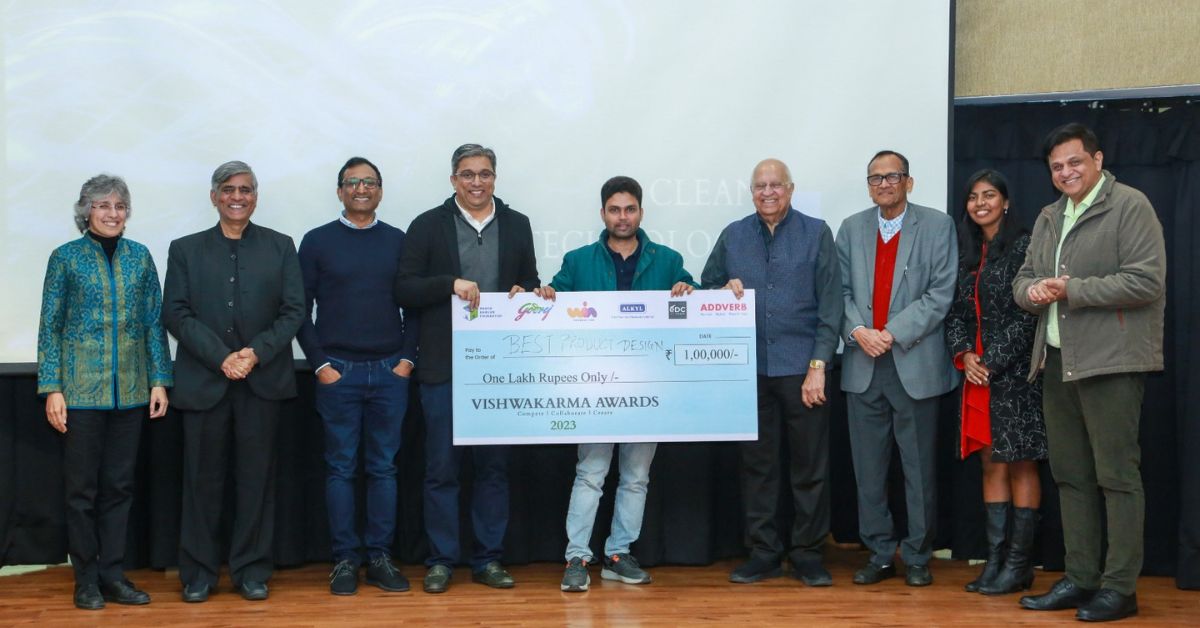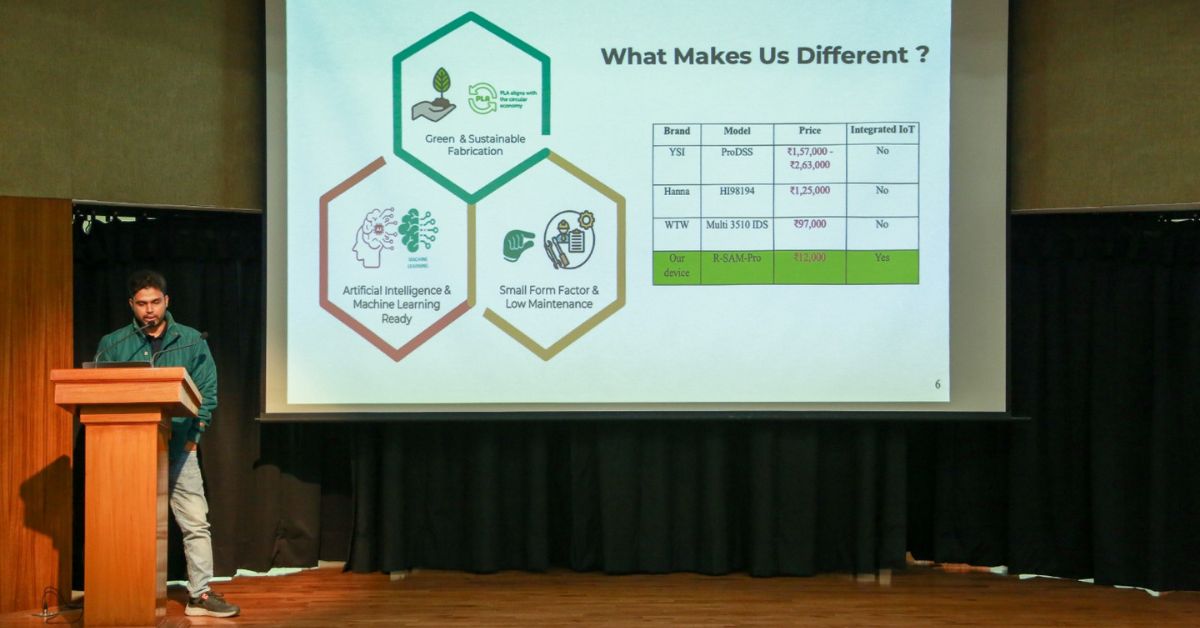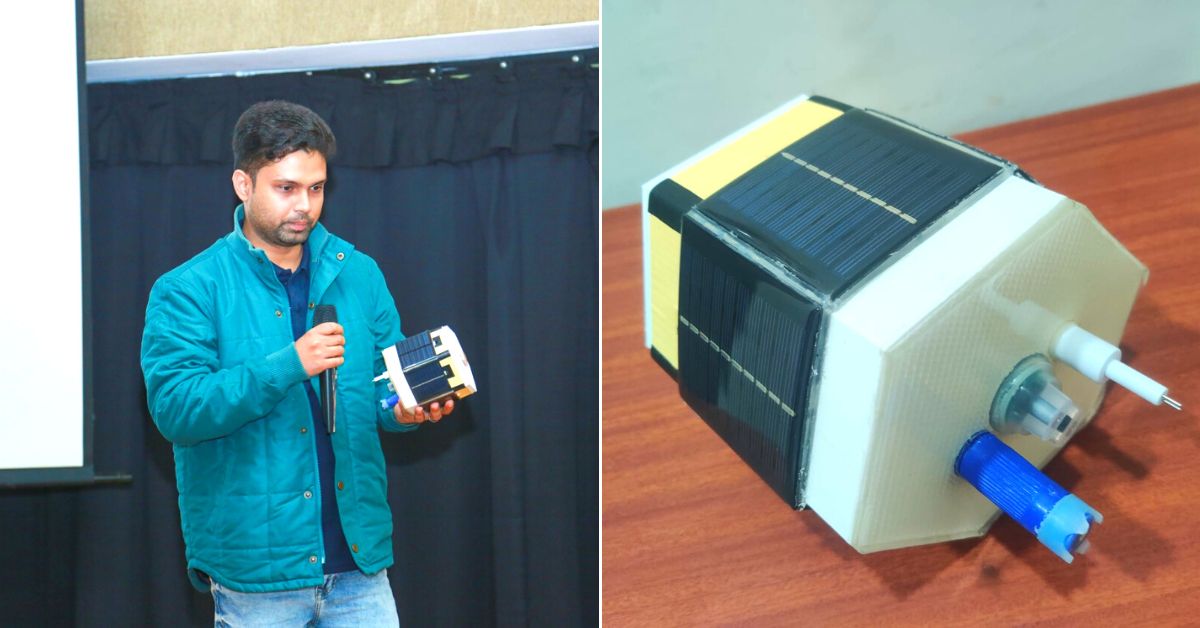Responding to the water crisis in India and its growing sanitation requirements, a 30-year-old PhD scholar at the Department of Biosciences and Bioengineering in IIT Guwahati has recently developed a unique and affordable Internet of Things (IoT)-enabled water quality monitoring device.
Satyam, who only goes by his first name, is a resident of Ranchi, Jharkhand, and the son of a retired state government employee. His device costs approximately Rs 12,000, a stark contrast to existing integrated water quality devices from around the world that cost more than Rs 2 lakhs and are not IoT-enabled.
Called the R-SAM-PRO, this device won the ‘Best Product Design’ award under the Water and Sanitation category at the Vishwakarma Awards 2023 organised late last month by IIT-Delhi in partnership with Maker Bhavan Foundation and the WIN Foundation.
The device stood out for its ability to comprehensively address the critical water and sanitation needs with technological innovation, “integrating IoT, multiple sensors, and AI readiness for advanced water quality monitoring,” according to a press release issued by IIT-Guwahati.
Going further, the release explains, “The system’s real-time data provision is crucial for environmental conservation and resource management. Its affordability and user-friendly design make it highly accessible, with potential for widespread adoption, especially in resource-limited settings, significantly enhancing water quality monitoring practices.”

Addressing water pollution
Satyam completed his master’s in biotechnology from IIT-Roorkee before proceeding to his PhD at IIT-Guwahati under the guidance of Professor Sanjukta Patra.
Speaking to The Better India, he explains the motivation behind developing this unique device, “In a country like India, where a large population resides along many water bodies, the need for real-time sensing of water parameters becomes more urgent. Working from water stress to water health and water availability is the driving force (behind this innovation).”
He adds, “By providing a cost-effective, multi-parametric, IoT-enabled solution, we aim to empower communities and authorities with the tools needed for effective water resource management and remediation.”
He found that while working with one of his PhD objectives — where he was focusing on the development of an advanced bio-oxidation system for water remediation — he realised that there were very limited multiparametric devices available to promptly check the quality of water in real-time.
“This motivated me to channel my efforts into creating a solution that would not only aid in my research but also serve the broader community by providing an affordable, real-time, and multi-parametric water quality monitoring tool,” he adds.
How does it work?
The key features of this IoT-enabled real-time water monitoring system include:
● Integrated GPS: Enables precise location tracking of water quality metrics.
● Diverse Sensors: Measures turbidity, Total Dissolved Solids (TDS), oxygen levels, temperature, and pressure for a comprehensive water quality analysis.
● ESP32 Microprocessor: Powers the device with efficient processing and communication capabilities.
● Hybrid Power System: Ensures adaptability to different environments, reducing reliance on a single power source.
● AI Integration: Designed to incorporate artificial intelligence, enhancing data analysis and predictive capabilities.
● Advanced Data Retrieval: Streamlines access to collected data for user-friendly interactions with various stakeholders.
Speaking to The Better India, Satyam explains, “The R-SAM-PRO is based on a microprocessor. It has a set of sensors for TDS (total dissolved solids), turbidity, dissolved oxygen, GPS, temperature, and pressure, alongside an additional sensor for component area humidity monitoring. Upon activation, these sensors relay data to the microprocessor, which processes and securely transmits it to a real-time database.”
Users can access this data through a user-friendly console, visualising it in graphical or tabular formats and tracking the sensor’s location. The device’s “hybrid power management system” ensures its operational longevity across day and night cycles, making it versatile for various applications, from municipal water monitoring to industrial wastewater treatment.
“The work is protected by a patent,” he says.
Going further, he adds, “The device leverages the IoT for seamless communication between devices and cloud-based databases, significantly enhancing its utility and accessibility. The vast data collected can be used to train AI models to predict water quality variations, providing valuable insights for both local populations and industrial settings.”
“As IoT and AI technologies advance, they promise to revolutionise our understanding and management of water resources and sanitation. For example, based on trained data it can predict pre and post-monsoon water parameters range,” he explains.

What makes this device so affordable?
Speaking to The Better India, Satyam notes, “The cost reduction of our device to Rs 12,000 is a significant achievement when compared to similar products from international companies like YSI, Hanna, and WTW, which are priced between Rs 97,000 and Rs 2,63,000. The high costs of these competing products can be attributed to factors such as import duties, limited after-sales support, and high operational expenses as these products are not made in India.”
“Our approach to bringing down costs involved using industrial-grade water sensors and leveraging Google’s free web hosting and real-time database services. This strategic choice not only made our device affordable but also integrated it with cutting-edge IoT capabilities. We developed this product in-house at the Enzyme and Microbial Technology Lab,” he adds.
Challenges in developing the device
In the initial stages of development, Satyam, his mentor and colleagues encountered challenges related to power distribution, weight balancing, and maintaining a compact design.
To address these issues, they made several adjustments, including redesigning the case and the outer structure to improve buoyancy.
“We also integrated a 20,000 mAh high endurance battery to ensure longer operational times when solar power is not in use. Further refinements were made to enhance the smooth processing and display of data, ultimately overcoming the initial challenges,” he notes.
The journey from concept to the current prototype spanned four years. Through successive iterations, they have refined the device, increasing the number of monitored water parameters.
“Our current model represents the third prototype with plans to expand its capabilities further,” he says.

Looking ahead
Thus far, Satyam claims that he has received one invitation from a startup and another from a major Indian company to scale up production of this device.
“But we are still refining this device each day and planning to come up with new versions with added features. The project currently receives support from the Spring EU India project, the WIN Foundation (a US-based nonprofit), and the Maker Bhavan Foundation. Although adding more sensors may slightly increase the device’s price, we aim to keep it below Rs 20,000 with new added features (R-SAM version 2). Scaling up manufacturing is anticipated to reduce costs, potentially making the device even more affordable,” he says.
Meanwhile, Professor Sanjukta Patra of the Department of Biosciences and Bioengineering at IIT Guwahati, also notes, “It has been a remarkable journey witnessing Satyam’s dedication and innovation in developing the IoT-enabled water monitoring system. His project, a beacon of technological advancement, reflects a deep understanding of the challenges faced in water resource management, particularly in developing nations. The system’s affordability, accessibility, and real-time data transmission capabilities are not just a testament to his technical prowess but also his commitment to societal betterment.”
(Edited by Padmashree Pande; Images courtesy IIT-Guwahati)
No comments:
Post a Comment